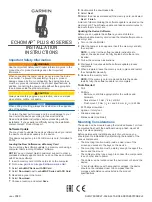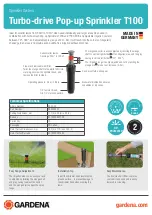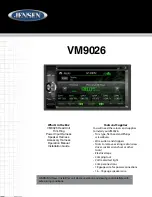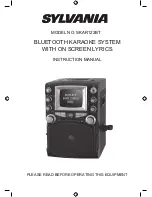
page A – 73
WheatNet-IP
/ Mar 2014
A P P E N D I C E S
WheatNet-IP
/ Mar 2015
When you are done defining devices click the
Close
button to commit your changes
and close the form. You will be prompted to restart the program before the new device
data will actually be used. Click
Yes or No as desired.
Signals
Signals are an integral part of Connect and Disconnect events. Although you can schedule
one of these events without specifying signals, the event will do nothing when fired.
Signals are operated upon within the WheatNet-IP system according to their Signal ID,
and you can, in fact, specify signals by referring to the ID. However, the signal IDs are
somewhat cryptic, and signals can be given names that we humans will find much more
meaningful.
Further, it makes sense from a human standpoint to have items with similar functions
named with similar names. For an example relative to the project at hand, we may find it
convenient to have a signal named “Fred” feeding an input on a Blade located in Studio 1,
and a signal of the same name feeding a Blade in Studio 2, because Fred sometimes works
from one studio and sometimes from the other. And so we allow the name to be extended
by appending a Location to the name. In this example we would have Fred – Studio 1
and Fred – Studio 2. In this way we can easily distinguish the two signals even when they
share a common name.
Signal names and locations are generally configured with the WheatNet‑IP Navigator GUI.
We just use the same names here, getting them from the fetched signal set.
Although earlier versions of the Scheduler always attempted to fetch signals from
the attached system at program start, that has changed with version 2.0. Now, when the
program starts, it first looks for a signal file residing on the computer hard drive. If at some
time since installing the program you have saved a signal set, the program will attempt to
load the last saved signal file. Prior to the first time you save a signal set the program will
attempt to load a default sample set that was installed for you along with the program.
If Scheduler cannot find a signal file at startup it will display a warning, as described
above in section “Default Signal Warning”, page A‑68. This will not be the case, however,
if the AutoSchedule feature has been enabled (see below section “The AutoSchedule
Feature”, page A‑83)
It is also possible at any time while the Scheduler is running to request signals from
the connected system. This is covered in the next section.
Request Signals From Connected Blade
To request signals from the connected Blade while at the main screen, select
File>Request
Config
from the menu. Or, if you are on the
Event Properties screen (see below “Create
Events” section, page A‑76) you can click the Request Config button. Either method will
start the signal fetch process described below.
















































